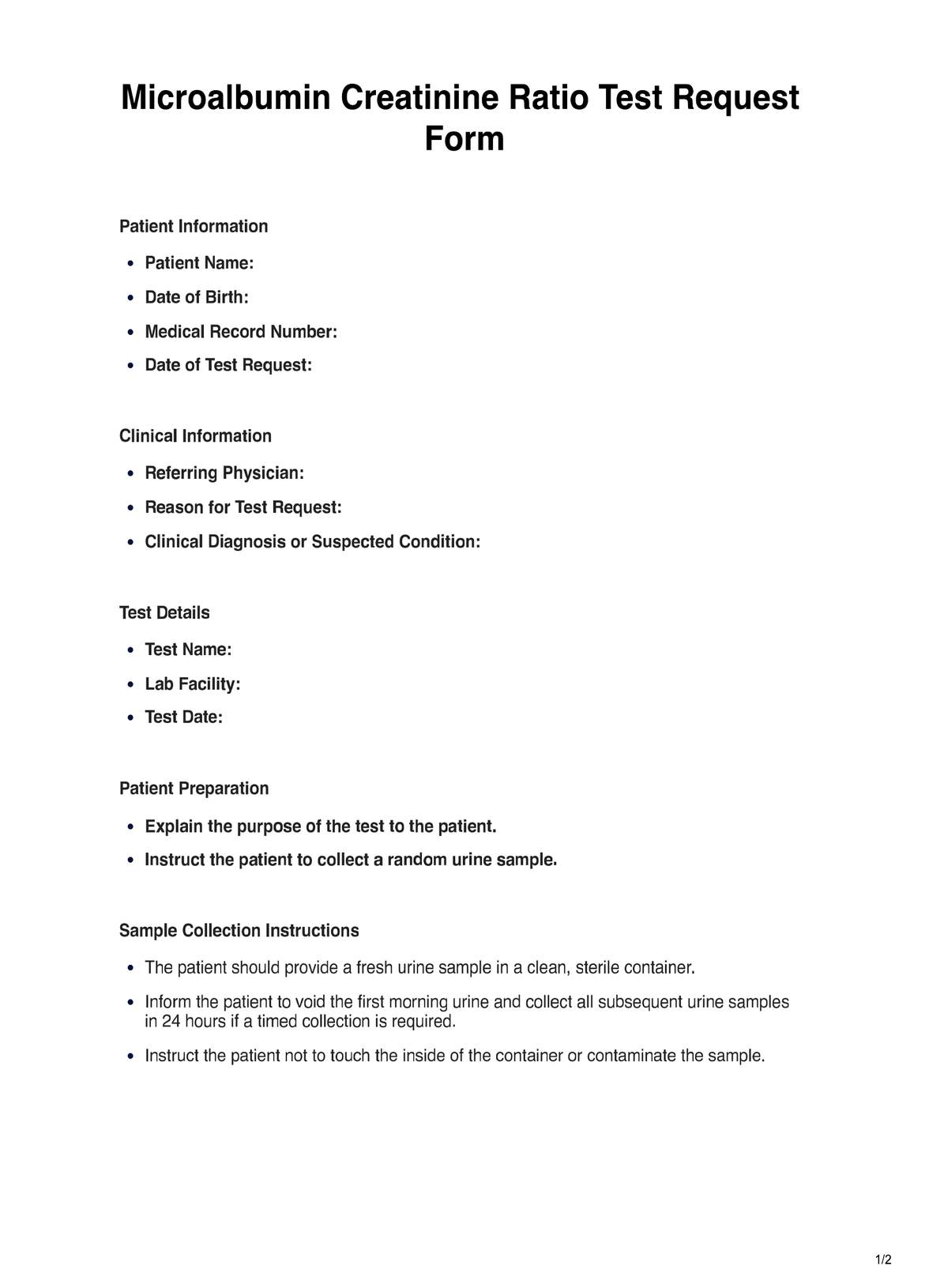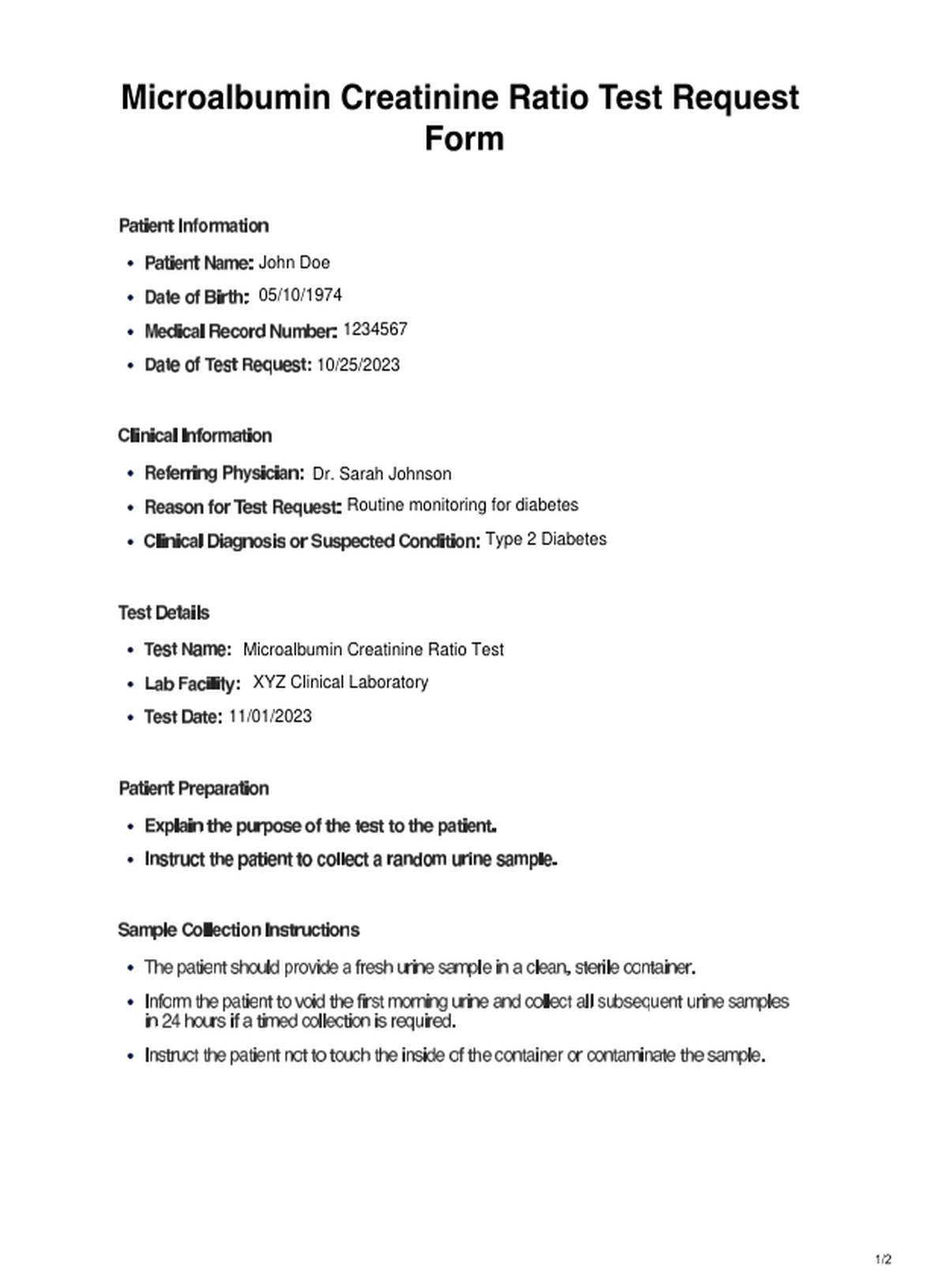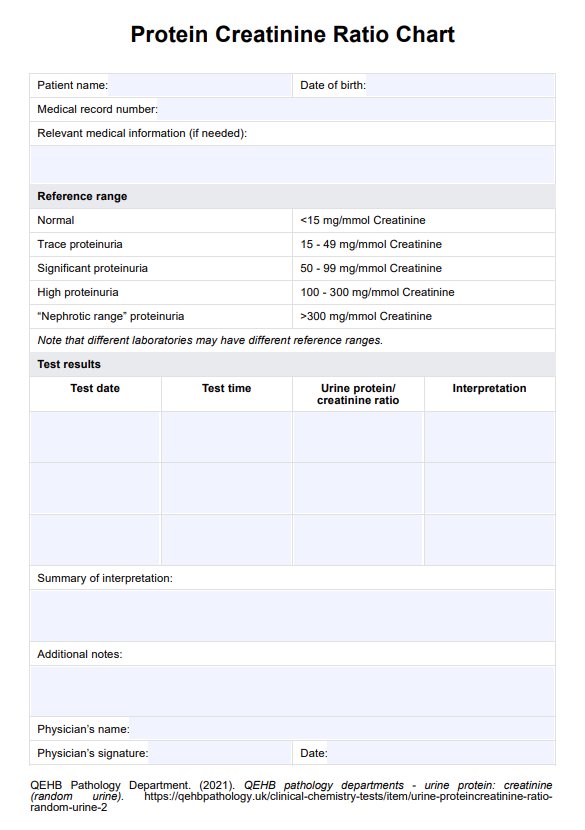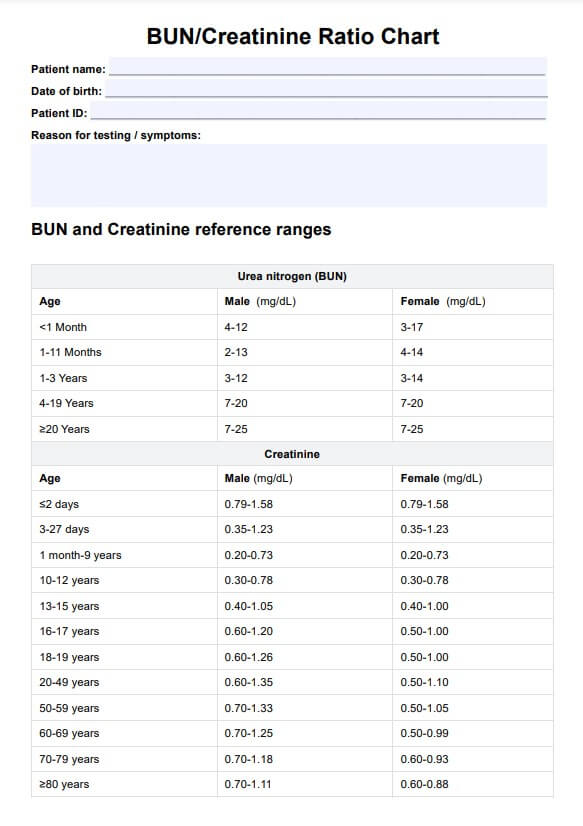Microalbumin Creatinine Ratio
Get insights into your kidney health with the Microalbumin Creatinine Ratio Test. Monitor diabetes-related kidney issues.


What Is a Microalbumin Creatinine Ratio Test?
The microalbumin creatinine ratio (also known as the urine albumin-to-creatinine ratio or UACR) test is a diagnostic tool used in medicine to assess kidney function and screen for kidney disease, particularly in individuals with diabetes or hypertension. This test measures the ratio of two substances in a urine sample: microalbumin and creatinine.
Microalbumin is a small protein found in the blood. Under normal circumstances, it should not be present in urine or very minimal amounts. Elevated levels of microalbumin in the urine can be an early sign of kidney damage, often occurring before more obvious symptoms of kidney disease become apparent.
Creatinine is a waste product produced by the muscles and eliminated by the kidneys. It is a standard marker used to assess kidney function. The creatinine level in the urine provides a reference point for the microalbumin levels.
The microalbumin creatinine ratio test calculates the amount of microalbumin in a person's urine and adjusts it for the creatinine level. This ratio is expressed as milligrams of microalbumin per gram of creatinine (mg/g). A higher ratio suggests that the kidneys are not effectively filtering waste products from the blood, which can indicate early-stage kidney disease.
This test is precious for individuals with diabetes, as diabetes is a common cause of kidney damage. It allows for early detection and monitoring of kidney problems, facilitating timely intervention to prevent or slow the progression of kidney disease. It is also a straightforward and non-invasive test, usually performed on a random or timed urine sample.
Microalbumin Creatinine Ratio Template
Microalbumin Creatinine Ratio Example
How Does it Work?
The microalbumin creatinine ratio test is a simple and non-invasive procedure used to assess kidney function and detect early signs of kidney disease, particularly in individuals with diabetes or hypertension. Here's how the test works:
Patient Preparation
Before collecting a urine sample, patients are advised to avoid excessive physical activity, certain medications, and foods that may affect the test results.
Urine Collection
The patient collects a random urine sample in a clean, sterile container. Sometimes, a healthcare provider may request a timed urine collection over 24 hours for a more accurate assessment.
Measurement of Microalbumin and Creatinine
The collected urine sample is sent to a laboratory, where it is first assessed for the levels of microalbumin and creatinine.
Calculation of the Ratio
The lab technician calculates the microalbumin creatinine ratio by dividing the microalbumin concentration by the creatinine concentration in the urine sample. This ratio is typically expressed in milligrams per gram (mg/g).
Assessing Kidney Function
A higher microalbumin creatinine ratio indicates that the kidneys are not effectively filtering waste products, suggesting potential kidney damage.
Clinical Evaluation
The healthcare provider reviews the test results in the context of the patient's medical history, including any underlying conditions such as diabetes or hypertension.
Monitoring and Treatment
Based on the results and the patient's medical history, healthcare providers determine the appropriate course of action. This may include monitoring the patient regularly, implementing lifestyle changes, or prescribing medications to protect kidney function and prevent disease progression.
When Would You Use This Test?
The microalbumin creatinine ratio test is a valuable tool in medical diagnostics, primarily used to assess kidney function and screen for kidney disease. It is especially relevant for healthcare practitioners when the following conditions and scenarios apply:
- Diabetes Patients: This test is routinely employed for individuals with diabetes, as diabetes is a leading cause of kidney damage. It is recommended for both type 1 and type 2 diabetes patients to detect early signs of diabetic kidney disease (nephropathy).
- Early Detection: Regular testing is vital to catch kidney damage in its early stages when interventions can be most effective.
- Hypertensive Individuals: Hypertension can also contribute to kidney damage. The microalbumin creatinine ratio test helps identify kidney problems in individuals with high blood pressure.
- Risk Factor Assessment: Kidney disease is associated with an increased risk of cardiovascular events. The test may assess the overall cardiovascular risk in patients, especially those with diabetes, as kidney issues are a marker for potential heart problems.
- Preventive Screening: In some cases, healthcare providers may recommend this test as part of preventative healthcare for individuals with a family history of kidney disease, even without diabetes or hypertension.
- Medication Monitoring: Certain medications can affect kidney function. Healthcare practitioners use this test to monitor the impact of medications, ensuring they are not causing kidney damage.
- Treatment Planning: For patients with abnormal results, healthcare providers can tailor treatment plans, including lifestyle modifications, medication adjustments, or referrals to kidney specialists (nephrologists).
What do the Results Mean?
The microalbumin creatinine ratio (UACR) test results provide essential information about kidney function and the presence of kidney disease. This test measures the microalbumin-to-creatinine ratio in a urine sample and is expressed in milligrams per gram (mg/g). Understanding the results' significance is crucial for healthcare practitioners and patients. Here's what common results generally mean:
Normal Range (Normal UACR)
UACR < 30 mg/g: A UACR within this range is typically considered normal. It indicates that the kidneys effectively filter waste products, and there is no significant leakage of microalbumin into the urine. This is the ideal result.
Increased Risk (Microalbuminuria)
UACR 30-299 mg/g: This range suggests microalbuminuria, a condition where the kidneys may not function optimally. It's often an early sign of kidney damage or a marker for diabetes or hypertension. Regular monitoring and lifestyle changes may be recommended.
Kidney Disease (Macroalbuminuria or Proteinuria)
UACR ≥ 300 mg/g: A UACR in this range indicates macroalbuminuria, a more severe form of kidney damage. It's often seen in advanced stages of kidney disease. Patients in this category may require closer monitoring, nephrologist (kidney specialist) treatment, and interventions to manage the underlying causes.
UACR results should be considered in the context of the patient's medical history, including factors like age, sex, and medications. A single elevated UACR result may not always signify kidney disease, often requiring repeat testing due to potential temporary influences such as infections or recent physical activity.
Interpreting UACR results is crucial in diagnosing and managing kidney disease in individuals with risk factors like diabetes, hypertension, or a family history of kidney issues. It guides healthcare practitioners in making informed decisions about treatment, lifestyle adjustments, and ongoing monitoring to safeguard kidney function and overall health.

Research & Evidence
The understanding of kidney disease dates back to ancient times, with mentions in early medical texts. However, the development of specific diagnostic tests like the UACR test is relatively recent.
Albuminuria, the protein albumin in the urine, was identified as a potential marker of kidney disease in the late 19th and early 20th centuries. Researchers recognized its importance in assessing kidney function.
The link between albuminuria and diabetes was established in the mid-20th century. It was observed that people with diabetes often had elevated levels of microalbumin in their urine before more severe kidney symptoms appeared.
The microalbumin creatinine ratio test, as we know it today, emerged in the late 20th century. It offered a standardized and quantitative method to assess kidney function. Instead of measuring just albumin, it adjusted for variations in urine concentration by considering creatinine levels.
Extensive research has been conducted to establish the clinical utility of the UACR test. Numerous studies have demonstrated its effectiveness in identifying early kidney disease, especially in individuals with diabetes and hypertension. These studies have contributed to the test's widespread adoption in clinical practice.
Leading medical organizations, including the American Diabetes Association and the National Kidney Foundation, have incorporated the UACR test into their clinical guidelines for managing diabetes and kidney disease. These guidelines are based on substantial evidence of the test's efficacy.
References
- aspiradiagnostics.com. (2020, October 29). Microalbumin/Creatinine ratio - Aspira Diagnostics. Aspira Diagnostics. https://www.aspiradiagnostics.com/product/microalbumin-creatinine-ratio/
- Burke, D. (2018, September 29). Microalbuminuria test. Healthline. https://www.healthline.com/health/microalbuminuria-test
- Chugh, A. R., & Bakris, G. L. (2007). Microalbuminuria: what is it? why is it important? what should be done about it? An update. Journal of Clinical Hypertension, 9(3), 196–200. https://doi.org/10.1111/j.1524-6175.2007.06445.x
- Connecticut Children’s. (2009, January 30). Urine Test: Microalbumin-to-Creatinine Ratio - Connecticut Children's. https://www.connecticutchildrens.org/health-library/en/parents/test-mtc-ratio/
- Medic, S. (2023, October 12). Understanding-Microalbumin-Creatinine-Ratio-A-Comprehensive-Guide-to-Kidney-Health. Second Medic. https://www.secondmedic.com/blogs/understanding-what-is-microalbumin-creatinine-ratio
- Polymed Lab. (n.d.). URINE MICROALBUMIN CREATININE RATIO. https://polymedlab.ph/products/copy-of-urine-microalbumin-micral
Commonly asked questions
The test is typically requested by healthcare providers, especially for individuals with diabetes, hypertension, or a family history of kidney issues.
Patients provide a urine sample, then analyzed in a clinical laboratory. The test measures the ratio of microalbumin to creatinine to evaluate kidney health.
Patients provide a urine sample, then analyzed in a clinical laboratory. The test measures the ratio of microalbumin to creatinine to evaluate kidney health.













































































































